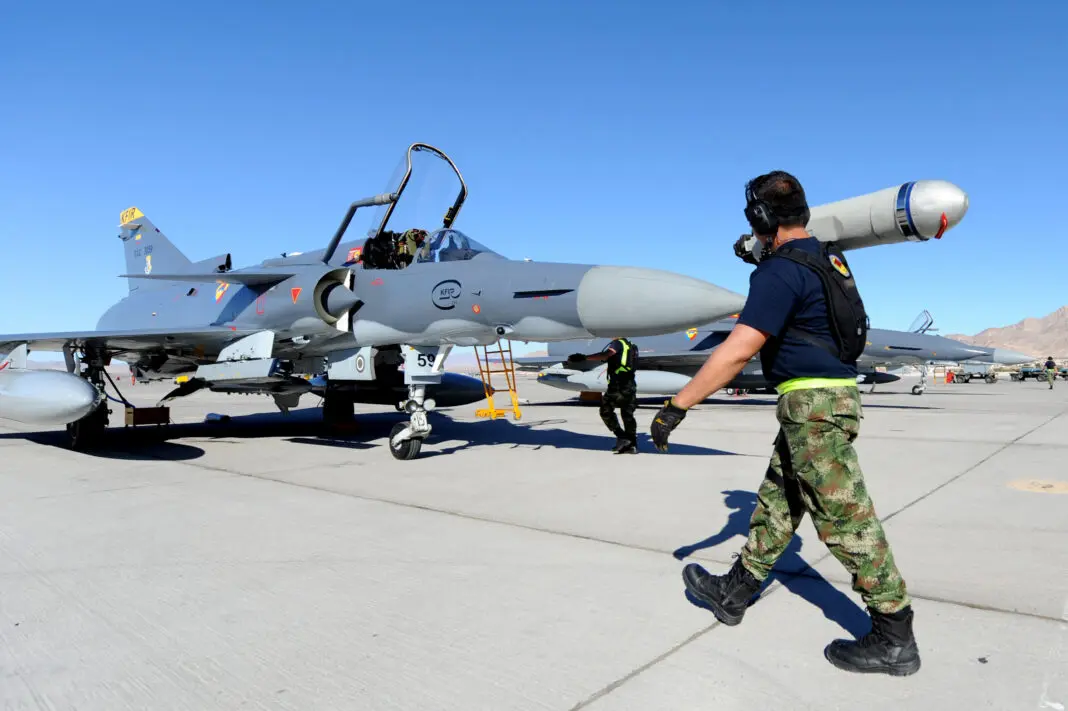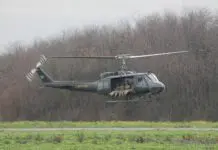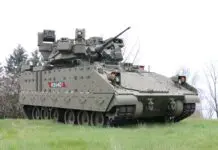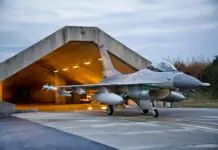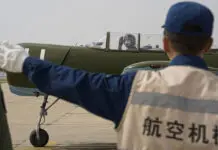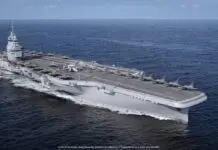Through this new series of articles within the Zona Militar portal, I will analyze how President Gustavo Petro’s decisions have had consequences for each of the Colombian Armed Forces. His statements and judgments, even if they do not imply a direct order, have consequences for the acquisition, maintenance, and donations of military material for the updating and increasing of the capabilities of each of the institutions under the Ministry of Defense. We will also analyze the consequences of the inactivity and lack of knowledge of Minister of Defense Iván Velásquez Gómez, within the acquisitions made by the FAC, EJC, and ARC, which affect the budget and decrease the capacities that had been planned for each of the forces and their development in the 2020s and 2030s. In this first installment, we will analyze the effects on the Colombian Air Force.
Fighter Wing
Perhaps the most serious consequence of the indecisions of the Minister of Defense and the President of the Republic is the loss of the fighter wing of the Colombian Air Force. It is clear that the Compes, which are the colombian budgets for future acquisition of high-cost items, were established beforehand, appropriating the necessary funds for this important segment of air defense, but they were not applied with the omission of the signing of the contract to make effective the first Compes of December 2022, which meant that a new fighter jet could not be acquired to replace the Kfir.



The three candidates for such replacement and purchase were and are the Swedish SAAB GRIPEN, the American F-16, and the French Rafale. Although there was a clear preference on the part of President Petro for the French option, and a clear opinion from the Minister of Defense regarding the Swedish offer, in the end, the only certainty is that the contract was not signed. Because of the previously mentioned, despite years of planning by Air Force officers, completely thwarted the replacement of Colombian Air Force fighter jets.
It is clear that political indications, fear of facing public opinion regarding spending, the minister’s inability to explain to Colombians the established allocations and how they would not affect the general budget of the nation, led to the disappearance of the fighter wing within the Colombian Air Force by 2026.
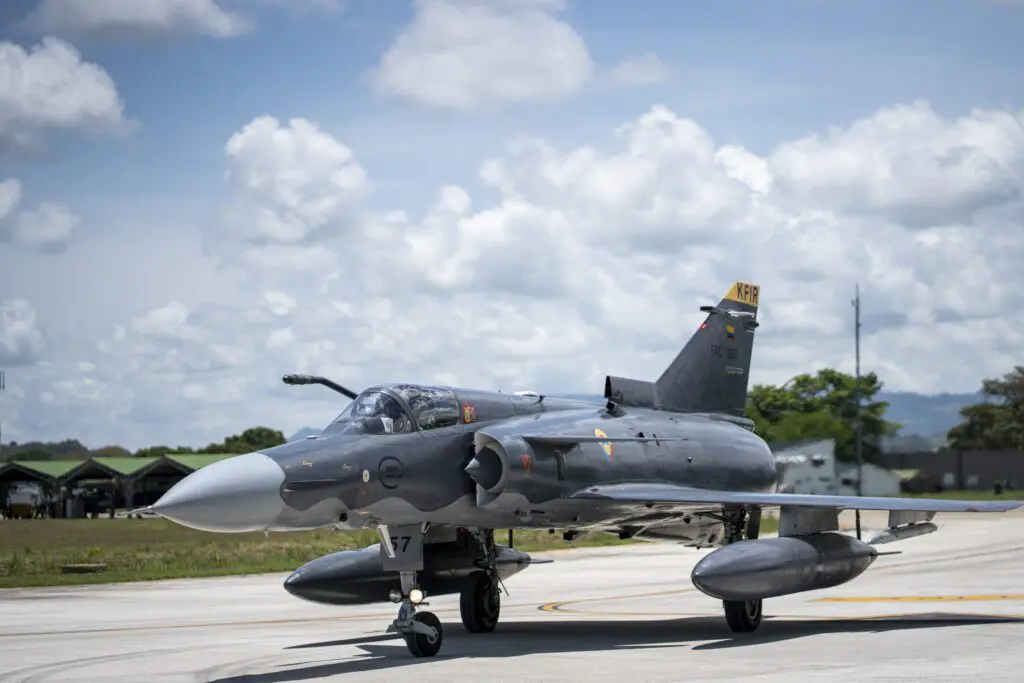
In addition to the above, the President’s tactless statements led to Israel denying the delivery of supplies to maintain the Kfir fleet for at least a couple of years. It should be noted that Israel was the first to deny Colombia the acquisition of spare parts for various weapons from and manufactured in that country. Subsequently, the president, through a recent statement a few days ago, also denied the signing of new contracts with the Israeli state.
As a result, the Kfir will cease to function by the end of 2024, without a real replacement despite multiple positive announcements from specialists that have not materialized into reality and without confirmation of maintenance of the current fleet to be carried out by the Israeli Aerospace Industries AIA. In 2025, Colombia will lose its supersonic and interdiction capabilities.
Ground Attack Turbofan or LIFT Wing
Following the retirement of the A-37 as counter-insurgency aircraft, the purchase of a LIFT (Lead-In Fighter Trainer) aircraft was also necessary. The closest offers presented were the European M-346 Master by Leonardo and the South Korean KAI T-50 Golden Eagle by Korean Aerospace Industries. It is worth noting that despite the good intentions of specialists, officers, and Colombian society in general, these acquisitions are unattainable since future budgets are not allocated to replace these types of aircraft with a turbofan jet.
Furthermore, LIFT aircraft should serve as advanced trainers and attack aircraft, as developed in all air forces worldwide. However, FAC officers ignored this trend, and there was an attempt to replace the T-37 with propeller-driven T-6 Texan II aircraft, a decision deemed entirely absurd due to the different capabilities of these aircraft. This was due to the lack of understanding by politicians responsible for the Ministry of Defense, who continued to allow the purchase of T-6 Texan II without reviewing any irregularities in the procurement process or analyzing that they are not a replacement for the T-37, thus wasting resources necessary for fleet upgrades.
Counterinsurgency Turboprop Aircraft
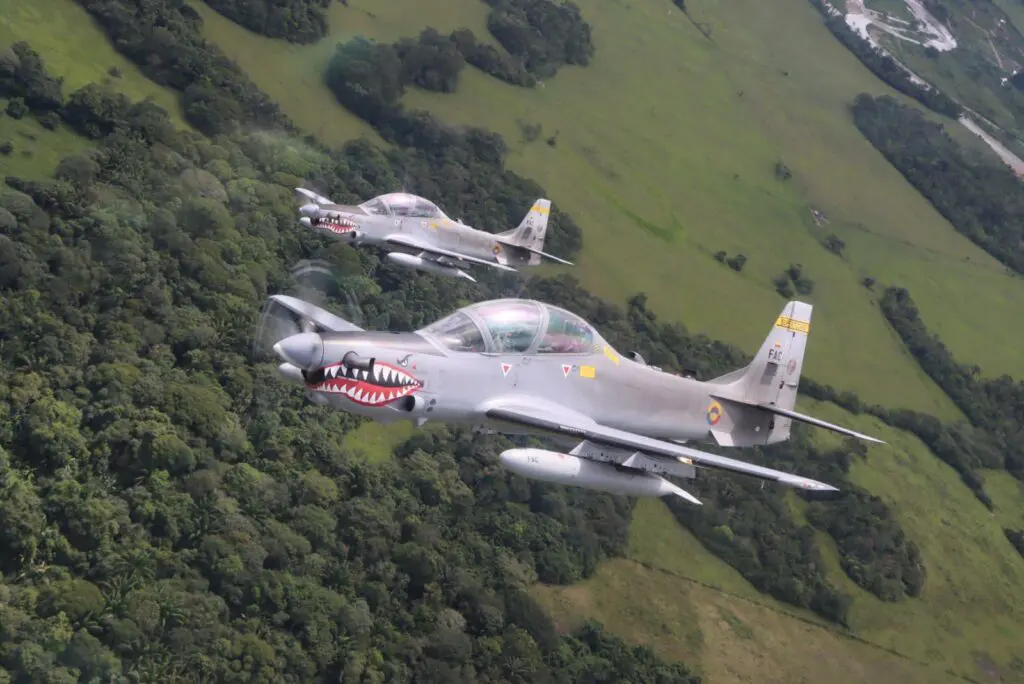
Regarding counterinsurgency aircraft, the Embraer AT-27 Tucano remains in full operation, discounting naturally the two aircraft lost in a tragic accident that was not due to the machines themselves. The AT-29 Super Tucano also continues in full operational use and is the primary force capable of conducting National Defense actions within the internal conflict. Here arises another new question: why are aircraft like the Textron T-6 Texan and the AT-29 Super Tucano in the same Air Force when maintaining two different types of aircraft generates additional costs? Logically, the Air Force would have preferred more AT-29s to strengthen the fleet given their dual training and attack capabilities, the latter of which the aircraft manufactured in the United States lack.
Basic Trainers
As for basic trainers, the decision to purchase the Cessna 172 Skyhawk is understandable as it is the Air Force’s aircraft that trains pilots in their early stages and should replace the aging Calima aircraft, supposedly manufactured in Colombia (although they cannot be manufactured in the country anymore). Despite the revisionism of the new government, there has been no serious investigation into this contract.
Transport Aircraft Fleet
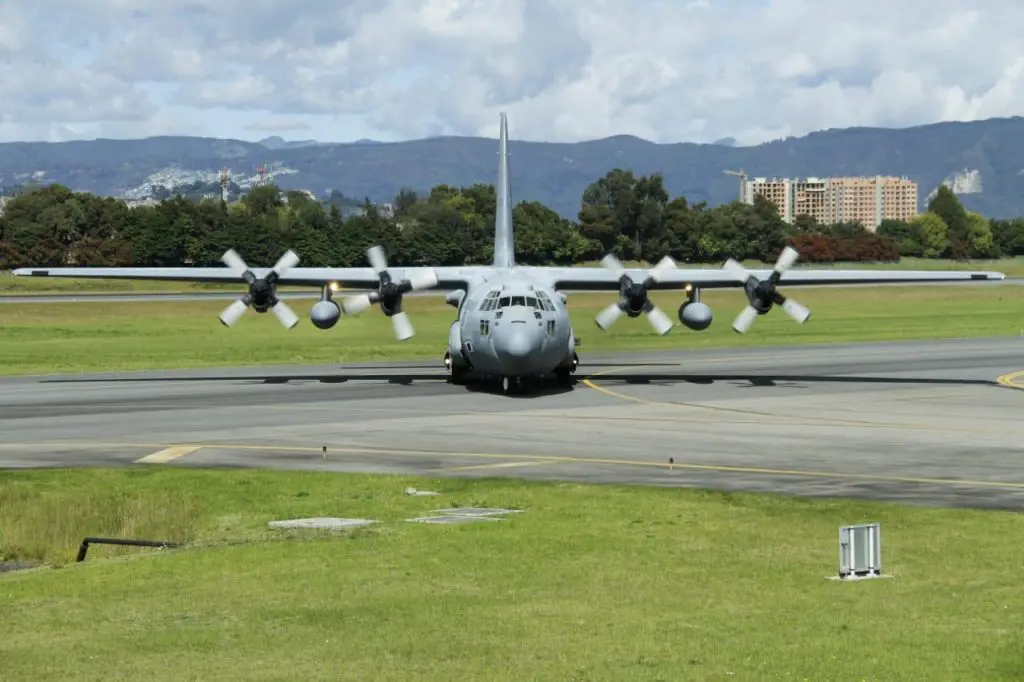
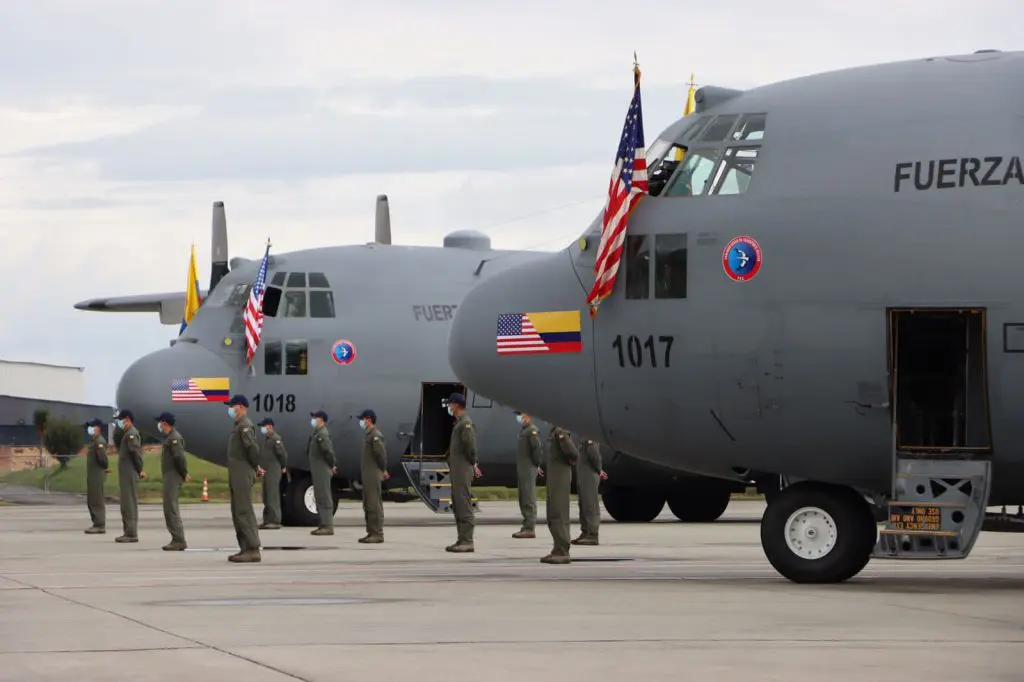
Regarding the transport fleet, it must be said that there has been little interest from the Ministry of Defense in improving capabilities. The latest fleet expansion was due to a purchase supported by the United States and processed during the previous government. Currently, there are no procedures by the current leadership to acquire new C-130 Hercules or other aircraft that could fulfill the essential transport missions for the Air Force, such as those from the Airbus Casa 295 family, without budget allocation from the FAC or the Ministry for such a project. Despite President Petro signing an agreement with AIRBUS for the acquisition and construction of drones, there has been no mention of the intention to acquire this important resource in this segment of aerial capabilities.
Unmanned Aerial Vehicles
Regarding drones, the agreement signed in Spain for the SIRTAP surveillance drone is noteworthy and highly anticipated. However, the lack of vision from the Ministry, which has not recognized developments in this sector seen in the Nagorno-Karabakh conflict, Hamas’ attack on Israel, Israel’s response against the Gaza Strip, and the Ukraine conflict, has hindered the vision of high-altitude attack drones, attack drones, kamikaze drones, and free-fall attack drones, leaving us only with the outdated category of surveillance drones.
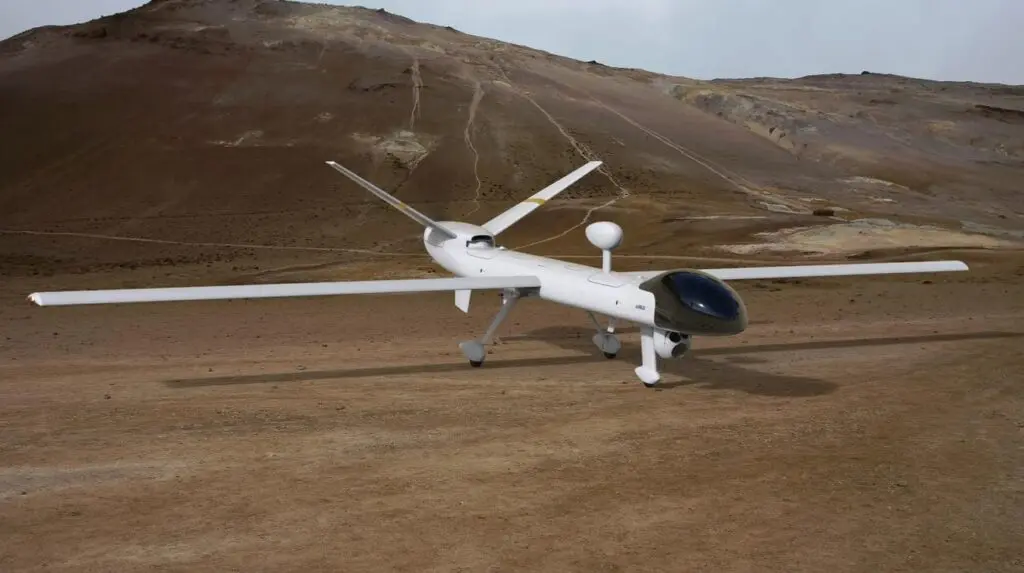
Now it is important to highlight that the CIAC (Corporación de la Industria Aeronáutica Colombiana) already has tested and certified models, and it is strange that these elements are not acquired by the Colombian Military Forces, considering that they prefer to acquire drones from private companies. As a result, the number of domestically built aircraft is much lower than those acquired from abroad, which is a mockery of the supposed government policy regarding defense sector construction and technological development for the nation.
Returning sadly to the president’s statements, it must be noted that the main drones in the Colombian Air Force are of Israeli origin, namely the Elbit Hermes 900 and Elbit Hermes 450. Their fate and maintenance are in doubt due to the political differences of Dr. Petro with the State of Israel.
Helicopters

Another segment in which the Air Force is indispensable is that of helicopters. Firstly, it must be said that President Petro’s statements leave us without support for the maintenance of the AH-60 Arpía fleet, as the development of this attack helicopter is an agreement with Israeli companies. This implies that these helicopters, particularly in terms of their attack systems, may soon lack spare parts. Secondly, the rest of the Colombian Air Force helicopter fleet is being maintained by CIAC and the Air Force itself, and donations have been received, albeit during President Petro’s tenure, they were processed by his predecessor. However, there has been no official declaration to date regarding new projects to strengthen the Air Force’s helicopter capabilities.
Other aspects and defense issues
President Petro’s statements, coupled with the Minister of Defense’s incapacity, have cast doubt on two fundamental contracts that have already been signed, which would provide the Air Force with new capabilities it has never had before. The first of these are the Barak MX anti-aircraft systems from Israel Aerospace Industries, and the second are intelligence and electronic warfare (EW) aircraft from Elbit Systems. These contracts with Israeli firms are now in doubt following Israel’s veto and the president’s announcement not to acquire materials from that country, thus losing an important development for the Air Force.
Now, besides the problems with the purchase of the anti-aircraft system from IAI, the current government has also shown no concern for acquiring equipment for the protection and defense of airfields. There is no allocation for the acquisition of anti-drone systems or detection radars for such elements, despite the fact that Codaltec, a Colombian company, has clear alternatives in terms of radars and electronic systems that would provide a solution to this need. However, these are not acquired because the officials and politicians in charge are unaware that such equipment is manufactured in Colombia, and strangely, they prefer purchases from foreign companies.
There is a complete lack of understanding of the need for current air forces to counter drone attacks against airfields, infrastructure, bases, and troops. Recent videos show irregular groups using attack drones against troops. However, for some sectors, it is more profitable to contract with foreign companies than to purchase from companies within the defense sector, not because of quality but due to the appealing commissions offered. Naturally, vehicles for high-ranking officials are still being purchased for city transport, while airbases remain unprotected.
Within this item, we must also mention the air defense system, where the current government has not tendered or shown any interest in acquiring new radars to provide more security to Colombian skies. This leaves our airspace unprotected against illegal flights. I would like to highlight Codaltec’s development of the SIDER radar, which, despite not being a perfect solution, would serve many purposes but has not been acquired by any of the forces (there is only one in operation, donated by CODALTEC).
Conclusions
To conclude, the current government does not concern itself with maintaining the Kfir fleet without acquiring a new fighter jet. It also does not seek a solution to the lack of A-37s and T-37s, and apparently, our Air Force will solely rely on Brazilian aircraft, which will not increase in number due to the strange interest of some former and current officers in purchasing T-6 Texan II aircraft. Furthermore, air defense or intelligence capabilities will not increase during this government due to lack of knowledge and political tact.
On the other hand, the Petro government has always argued that the military forces should contribute to meeting social needs, yet we see how new medical transport aircraft have not been acquired. Moreover, after multiple wildfires in the country during the last months of 2023 and early 2024, no real measures have been taken for the Air Force to have the capacity to extinguish these events across the national territory. The Force has acted with diligence and capacity despite the clear lack of resources during these emergencies. Elements already purchased during such events have stopped working due to the lack of necessary resources for their maintenance, such as systems attached to the C-130 Hercules. It is important to note that there has also been no interest from the Ministry of Defense in improving the capabilities that the Air Force has in response to such natural disasters.
Furthermore, it remains to be understood how defense sector companies should generate industrial and economic development for the country, as announced. This consideration has not been given, considering that companies like Codaltec or CIAC have not been facilitated to be the sole suppliers of systems such as drones, radars, and anti-drone systems to the Colombian Armed Forces. Thus, the projects developed by these entities remain mere dreams without a future, contradicting all the statements of Mr. Gustavo Petro.
Let’s hope that during the remaining two years of the current administration, there will be change, understanding, and the building of a better future for the Colombian Air Force, improving its capabilities for defense and support to our society.
You may also like: Getting to know the new Colombian-made 26 FT MILITAR motorboat: interview with Andrés Giraldo, General Manager of Mar 10


